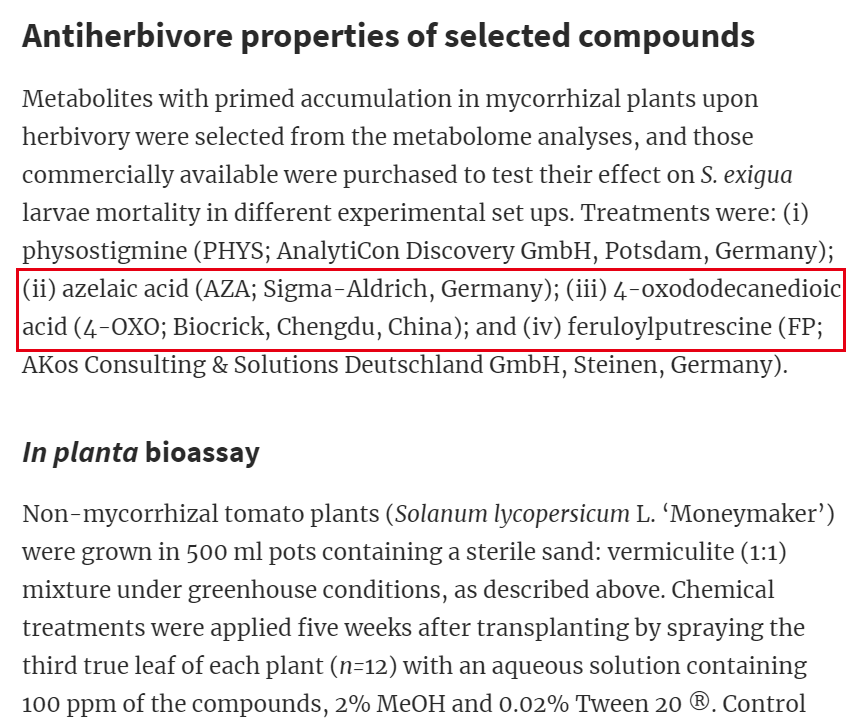Mycorrhizal symbiosis primes the accumulation of antiherbivore compounds and enhances herbivore mortality in tomato
Journal of Experimental Botany, Volume 72, Issue 13, 22 June 2021, Pages 5038–5050
PMID:33884424
 Plant association with arbuscular mycorrhizal fungi (AMF) can increase their ability to overcome multiple stresses, but their impact on plant interactions with herbivorous insects is controversial. Here we show higher mortality of the leaf-chewer Spodoptera exigua when fed on tomato plants colonized by the AMF Funneliformis mosseae, evidencing mycorrhiza-induced resistance. In search of the underlying mechanisms, an untargeted metabolomic analysis through ultra-performance liquid chromatography tandem mass spectrometry (UPLC-MS) was performed. The results showed that mycorrhizal symbiosis had a very limited impact on the leaf metabolome in the absence of stress, but significantly modulated the response to herbivory in the damaged area. A cluster of over accumulated metabolites was identified in those leaflets damaged by S. exigua feeding in mycorrhizal plants, while unwounded distal leaflets responded similar to those from non-mycorrhizal plants. These primed-compounds were mostly related to alkaloids, fatty acid derivatives and phenylpropanoid-polyamine conjugates. The deleterious effect on larval survival of some of these compounds, including the alkaloid physostigmine, the fatty acid derivatives 4-oxododecanedioic acid and azelaic acid, was confirmed. Thus, our results evidence the impact of AMF on metabolic reprograming upon herbivory that leads to a primed accumulation of defensive compounds.
Plant association with arbuscular mycorrhizal fungi (AMF) can increase their ability to overcome multiple stresses, but their impact on plant interactions with herbivorous insects is controversial. Here we show higher mortality of the leaf-chewer Spodoptera exigua when fed on tomato plants colonized by the AMF Funneliformis mosseae, evidencing mycorrhiza-induced resistance. In search of the underlying mechanisms, an untargeted metabolomic analysis through ultra-performance liquid chromatography tandem mass spectrometry (UPLC-MS) was performed. The results showed that mycorrhizal symbiosis had a very limited impact on the leaf metabolome in the absence of stress, but significantly modulated the response to herbivory in the damaged area. A cluster of over accumulated metabolites was identified in those leaflets damaged by S. exigua feeding in mycorrhizal plants, while unwounded distal leaflets responded similar to those from non-mycorrhizal plants. These primed-compounds were mostly related to alkaloids, fatty acid derivatives and phenylpropanoid-polyamine conjugates. The deleterious effect on larval survival of some of these compounds, including the alkaloid physostigmine, the fatty acid derivatives 4-oxododecanedioic acid and azelaic acid, was confirmed. Thus, our results evidence the impact of AMF on metabolic reprograming upon herbivory that leads to a primed accumulation of defensive compounds.
- 4-Oxododecanedioic acid
Catalog No.:BCN5223
CAS No.:30828-09-2


